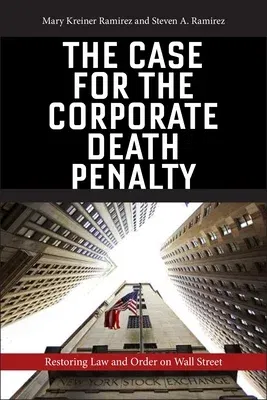A critical examination of the wrongdoing underlying the 2008 financial
crisis
An unprecedented breakdown in the rule of law occurred in the United
States after the 2008 financial collapse. Bank of America, JPMorgan,
Citigroup, Goldman Sachs, and other large banks settled securities fraud
claims with the Securities and Exchange Commission for failing to
disclose the risks of subprime mortgages they sold to the investing
public. But a corporation cannot commit fraud except through human
beings working at and managing the firm. Rather than breaking up these
powerful megabanks, essentially imposing a corporate death penalty, the
government simply accepted fines that essentially punished innocent
shareholders instead of senior leaders at the megabanks. It allowed the
real wrongdoers to walk away from criminal responsibility.
In The Case for the Corporate Death Penalty, Mary Kreiner Ramirez and
Steven A. Ramirez examine the best available evidence about the
wrongdoing underlying the financial crisis. They reveal that the
government failed to use its most powerful law enforcement tools despite
overwhelming proof of wide-ranging and large-scale fraud on Wall Street
before, during, and after the crisis.
The pattern of criminal indulgences exposes the onset of a new degree of
crony capitalism in which the most economically and political powerful
can commit financial crimes of vast scale with criminal and regulatory
immunity. A new economic royalty has seized the commanding heights of
our economy through their control of trillions in corporate and
individual wealth and their ability to dispense patronage. The Case for
the Corporate Death Penalty shows that this new lawlessness poses a
profound threat that urgently demands political action and proposes
attainable measures to restore the rule of law in the financial sector.

